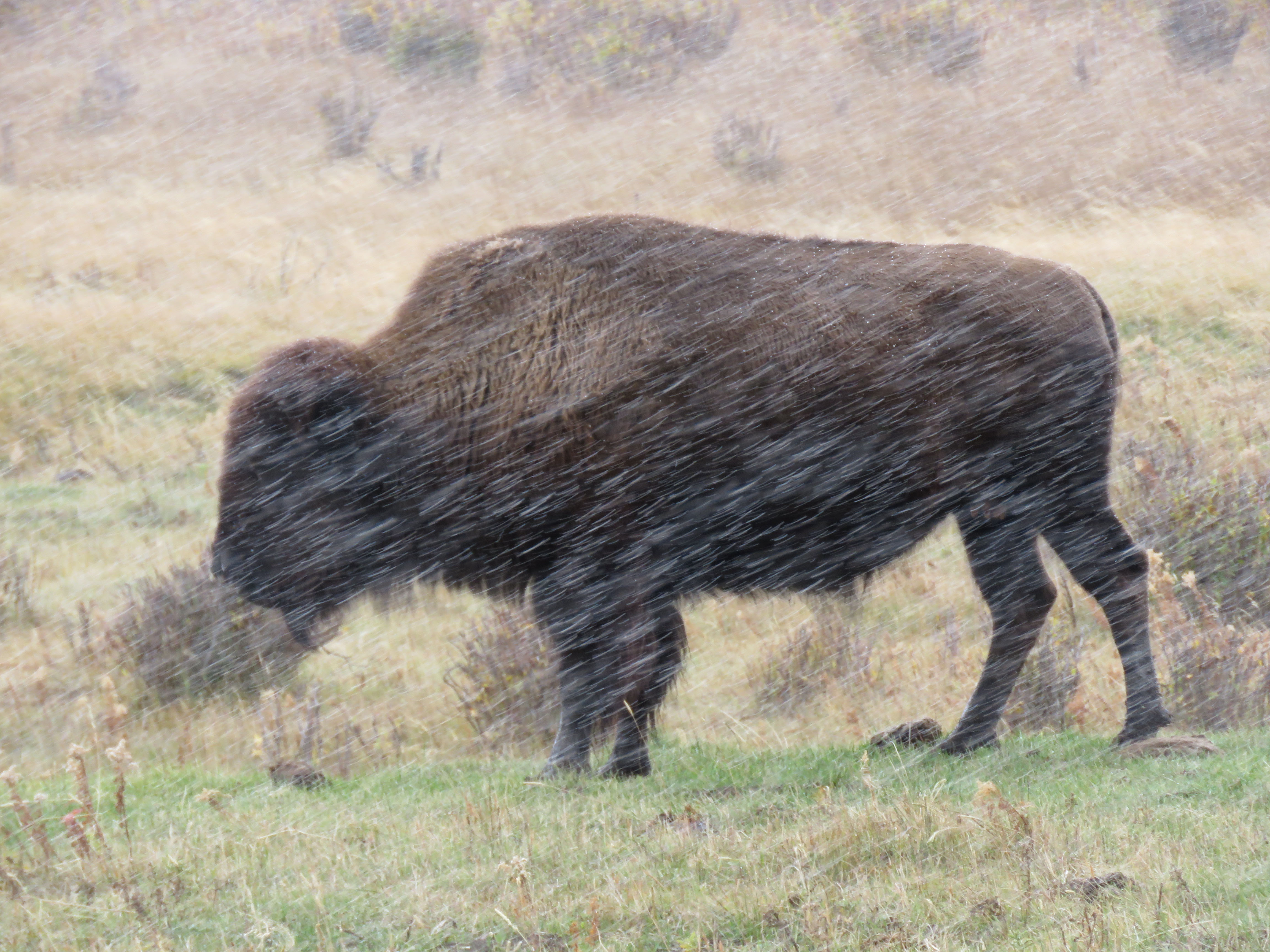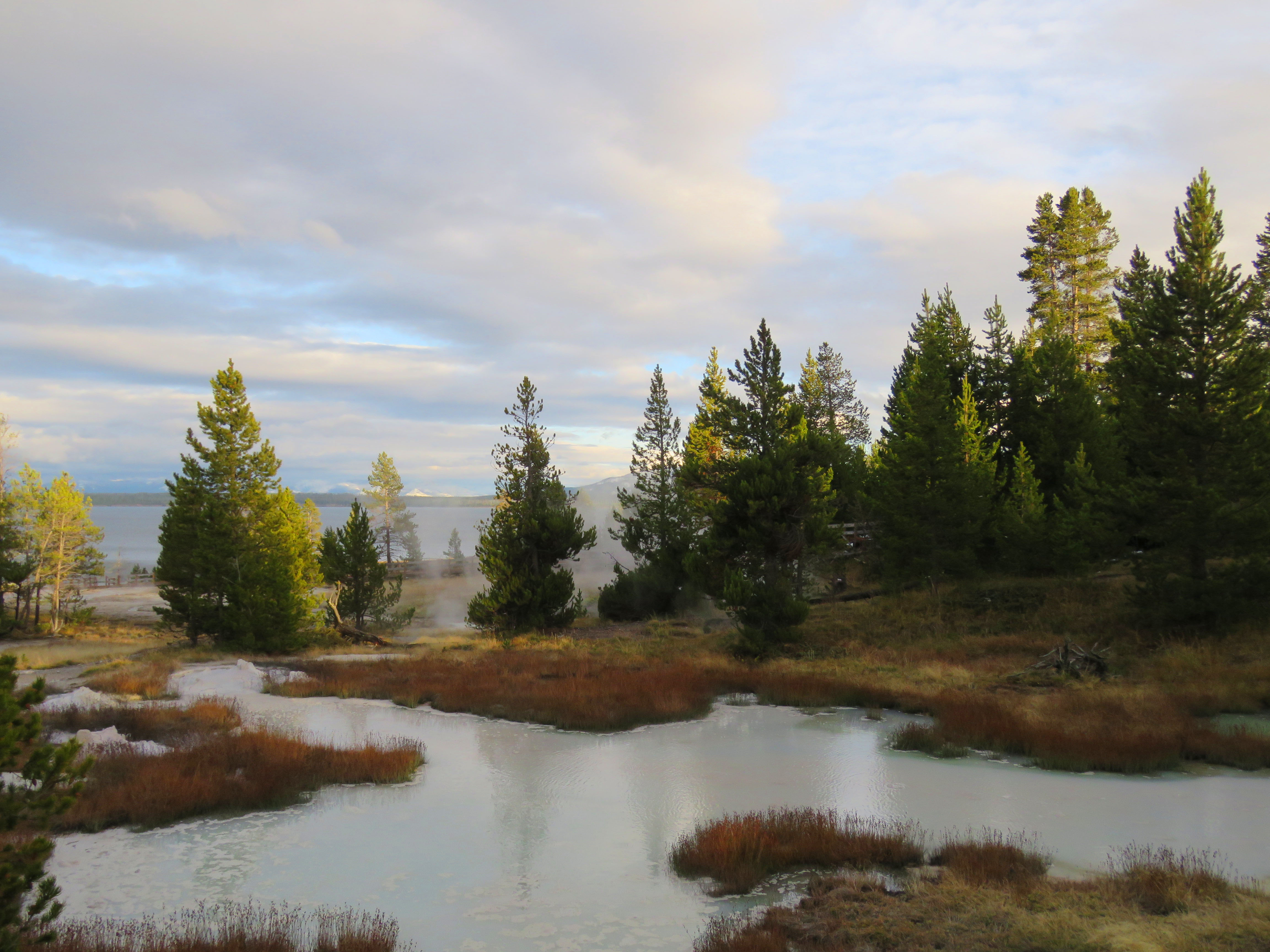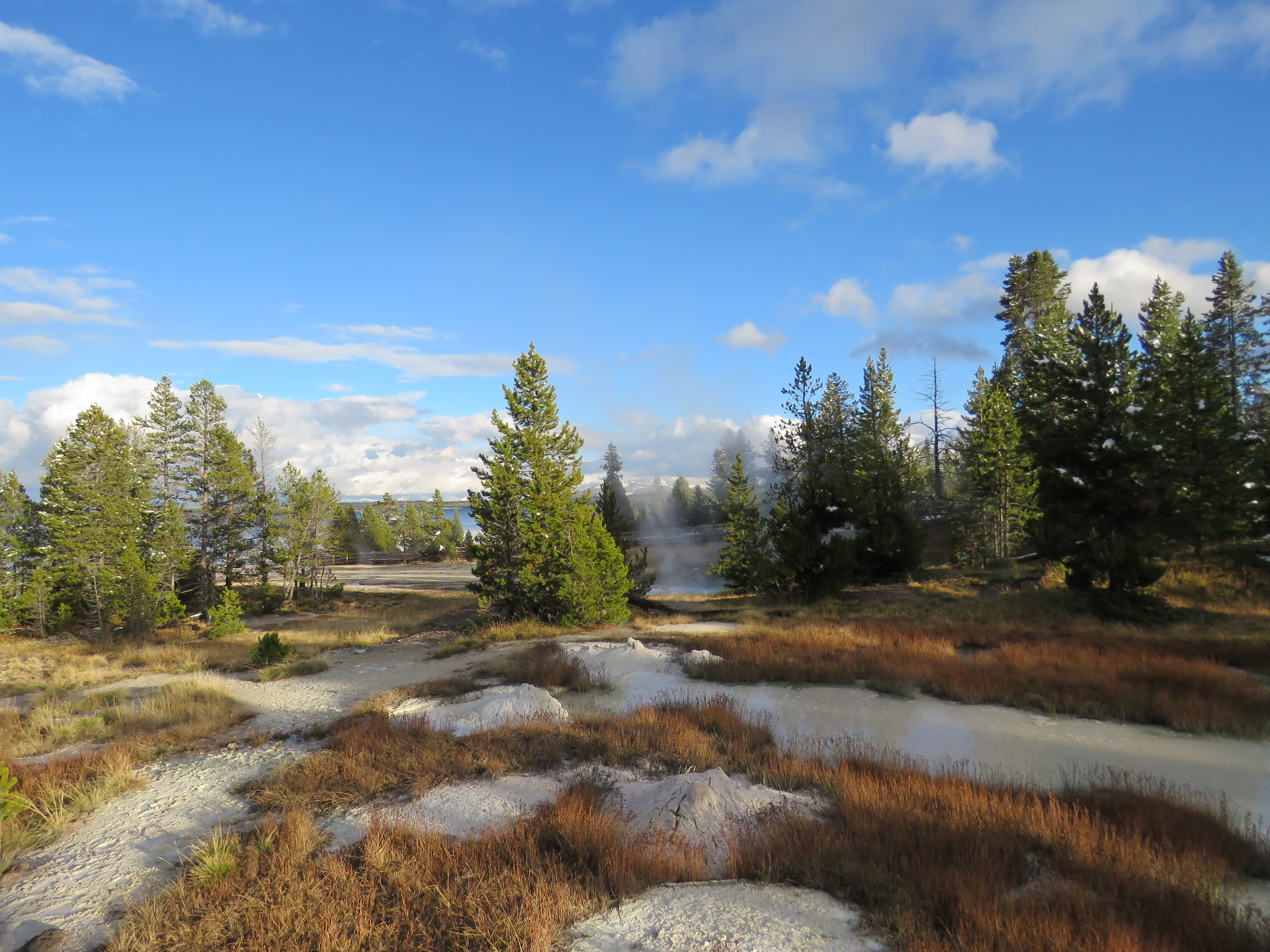Secret Vistas –
By Glynn Wilson –
YELLOWSTONE NATIONAL PARK, Wy. – Standing still in a mountain meadow as snowflakes begin to fall on a herd of bison along Beartooth Pass, you get the feeling of arriving in an ancient and distant land before human civilization began to eat away at nature and churn the world up into suburbs.
Off in the distance over fields and lakes you marvel at unspoiled mountain peeks covered in the first snows of autumn. It makes you want to hike for miles out into the wilderness and lie down on the soft grass and look up at the evening sky and forget about the modern world and the craziness of the U.S. presidential election.
Ever since I fell in love with the great outdoors as a kid camping in places like Little River Canyon in northeastern Alabama, and reading books in school libraries about the Lewis and Clark expedition, I have longed to make this journey. It is a long way from the beaches and swamps of the Gulf Coast to the Missouri River in Cannonball, North Dakota, and even farther to follow the river through South Dakota and Wyoming to Yellowstone, the world’s first national park.
We arrived after 13 days on the road and camped by the Gibbon River in Madison, not far from the Montana state line. On the 14th day, we made our way down to the compound around Old Faithful, the world’s most famous geyser that erupts and shoots its hot, volcanic water high into the air about every hour or so. We filled the camper van’s gas tank at the Delaware North Sinclair station and experienced the Xantara lunch buffet, prepared not by employees of the National Park Service but private concessionaires. We visited the park museum and book store and talked to people about the issue of the national parks being commercialized and privatized, even with a conservative cowboy photographer who was hawking a book of stereoscopes in the Old Faithful Inn.
After getting our fill of pan-seared trout in lemon and butter sauce and satisfying our mission to talk to people about the big story, we made our way back to camp in thick snow flurries all the way and got the fire going for the night. Even though the summer peak season is over, tourists still clogged the roads along the way, marveling at the buffalo ambling down the road in places, angling for a photo with their smart phones.
Over the next couple of days we explored more of the park, making it all the way to the Montana border in West Yellowstone and down to West Thumb, where we crossed the Continental Divide a couple of times along Craig Pass. On the way out of the park on our final day, we completed the inner circle and explored Virginia Cascade, Canyon Village, Fishing Bridge, Lake Village and Bridge Bay, finding our way to Yellowstone Lake and Yellowstone Falls at Artist Point, made famous by the artist Thomas Moran in 1872.
When the sun began to set over Lewis Lake, we made our way south out of the park, reluctantly, vowing to come back again someday and stay longer. We busted on down through the scenic state of Utah to Salt Lake City on the way to Grand Canyon National Park in Arizona, where we found a quaint little campground in Red Canyon to spend some time reflecting with enough of a WiFi connection to work and post. We made it just in time to hear the presidential debate between Donald Trump and Hillary Clinton, and nothing they were asked or said settled the issue of what will happen to the national parks after the election when the publicity over the National Park Service centennial dies down.
Over the next few days we will complete our journey in Arizona and report what we find before heading back through New Mexico, Texas, Oklahoma and Arkansas before making it back to Mobile. The trip has already been a major success, but we still hope people will pony up with enough funding to produce a documentary on these issues and help us share it with the American public.
Everywhere we go and talk about these things with folks, we find no one is even aware of the problems of commercialization and privatization of our public lands. They know about the Budweiser advertising and conservative cowboys like Ammon Bundy, who would have us turn over some of the most pristine places left in the country and the world to cattle ranchers, oil companies and gas frackers, even uranium miners, now clamoring to get their hands on the Grand Canyon itself along with places around Mt. Rushmore and the Crazy Horse Memorial in South Dakota.
Isn’t it about time we stopped building nuclear weapons and making peace around the world anyway? If Donald Trump gets his way, the never ending arms race and the ongoing religious wars will continue indefinitely. I don’t know if Hillary Clinton will handle things much differently, since nobody in the national press corps will ask. But I do know from experience that at least the public can influence Democrats with enough pressure, like the Standing Rock Sioux are doing in Cannonball.
If only more people could experience Yellowstone and camp out for a few days by a river in the snow, perhaps that would give preserving nature and achieving world peace a better chance. But human greed is run amok in the land. It is unclear if we have it in us to walk it back enough to make a difference. One can only hope.
More Photos

Another view of Yellowstone Falls from Artist Point, a scene made famous by artist Thomas Moran in 1872: Glynn Wilson

























